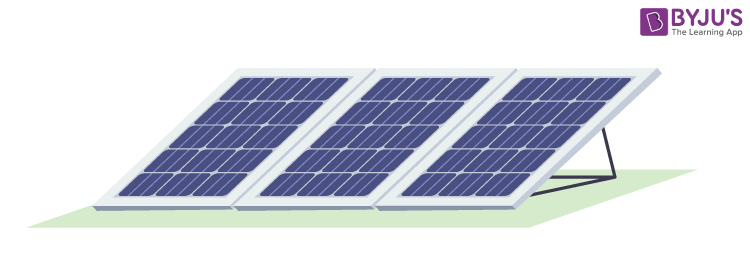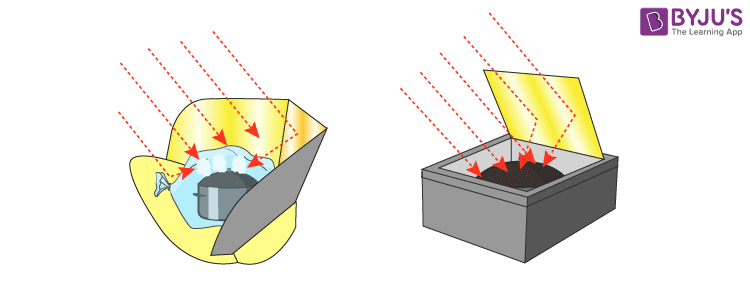We have learned about the role of renewable energy in the sustainable development of the country. Renewable energy is more sustainable than fossil fuel sources. Sun is the source of renewable energy. The radiating light and heat from the sun are harnessed and converted into other forms of energy. In this article let us learn about solar power, solar energy, and photovoltaic cells in detail.
| Table of Contents: |
Solar Power:
Solar power is an indefinitely renewable source of energy as the sun has been radiating an estimated 5000 trillion kWh of energy for billions of years and will continue to do so for the next 4 billion years. Solar energy is a form of energy which is used in power cookers, water heaters etc. The primary disadvantage of solar power is that it cannot be produced in the absence of sunlight. This limitation is overcome by the use of solar cells that convert solar energy into electrical energy. In this section, we will learn about the photovoltaic cell, its advantages, and disadvantages.

Solar Energy:
It is defined as the radiating light and heat from the sun that is harnessed using devices like heaters, solar cookers, and photovoltaic cells to convert it to other forms of energy such as electrical energy and heat.

Photovoltaic Cell:
- Photovoltaic cells consist of two or more layers of semiconductors with one layer containing positive charge and the other negative charge lined adjacent to each other.
- Sunlight, consisting of small packets of energy termed as photons, strikes the cell, where it is either reflected, transmitted or absorbed.
- When the photons are absorbed by the negative layer of the photovoltaic cell, the energy of the photon gets transferred to an electron in an atom of the cell.
- With the increase in energy, the electron escapes the outer shell of the atom. The freed electron naturally migrates to the positive layer creating a potential difference between the positive and the negative layer. When the two layers are connected to an external circuit, the electron flows through the circuit, creating a current.

Advantages of Photovoltaic Cells:
- Environmental Sustainability: Photovoltaic cells generate clean and green energy as no harmful gases such as COx, NOx etc are emitted. Also, they produce no noise pollution which makes them ideal for application in residential areas.
- Economically Viable:The operation and maintenance costs of cells are very low. The cost of solar panels incurred is only the initial cost i.e., purchase and installation.
- Accessible: Solar panels are easy to set up and can be made accessible in remote locations or sparsely inhabited areas at a lesser cost as compared to conventional transmission lines. They are easy to install without any interference with the residential lifestyle.
- Renewable: Energy is free and abundant in nature.
- Cost: Solar panels have no mechanically moving parts except in some highly advanced sunlight tracking mechanical bases. Consequently, the solar panel price for maintenance and repair is negligible.
Disadvantages of Photovoltaic Cells:
- The efficiency of solar panels is low compared to other renewable sources of energy.
- Energy from the sun is intermittent and unpredictable and can only be harnessed in the presence of sunlight. Also, the power generated gets reduced during cloudy weather.
- Long-range transmission of solar energy is inefficient and difficult to carry. The current produced is DC in nature and the conversion of DC current to AC current involves the use of additional equipment such as inverters.
- Photovoltaic panels are fragile and can be damaged relatively easily. Additional insurance costs are required to ensure a safeguard of the investments.
Frequently Asked Questions – FAQs
How do solar cells work?
What is the principle of solar cells?
Silicon crystals are laminated into p-type and n-type layers, stacked on top of each other. Light striking the crystals induces the “photovoltaic effect,” which generates electricity.
State true or false: Solar energy is a renewable form of energy.
What does the solar cell include?
Can solar power from photovoltaic cells be harnessed in the absence of sunlight?
No, it can be only harnessed in the presence of sunlight.
Hope you have learned in detail about Photovoltaic Cells along with advantages and disadvantages. Stay tuned with BYJU’S for more such interesting articles.

Comments